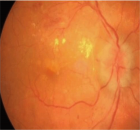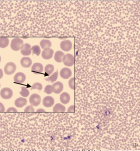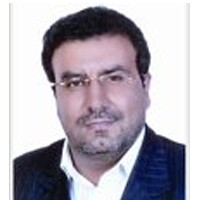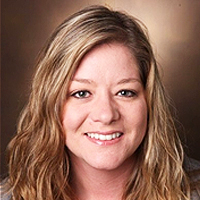Abstract
Research Article
Needs in siblings of individuals with Down Syndrome and levels of coping Cali, Colombia
Lina Fernanda Martínez Cadavid, Diana Marcela Gutiérrez Acosta and Luis Alexander Lovera Montilla*
Published: 01 November, 2021 | Volume 4 - Issue 1 | Pages: 093-100
Objective: To determine the needs and level of coping in siblings of people with Down Syndrome.
Methods: Descriptive, cross-sectional study, carried out in 2016. Sample consisted of 30 siblings of people with Down Syndrome between 6 and 60 years old. Using non-probability convenience sampling. Two instruments were used to collect the information: a) a validated sociodemographic and needs survey of the siblings, designed by the authors, and b). Callista Roy adaptation and coping survey validated.
Results: 60% of the siblings report not having felt judged by other people when presenting their brother/sister with Down syndrome. 73.3% of the siblings did not receive information about Down Syndrome from a nursing professional, the need to strengthen the nursing care provided to the siblings of people with disabilities in this regard is evident. 53.3% of these present a medium level of coping with respect to the condition of having a brother with Down syndrome.
Conclusion: Identified needs were: time needs, affective needs, family needs, social needs, economic and access to information needs. Highlighting these needs allows the nursing professional to identify and consider the siblings of people with Down Syndrome have different needs than the rest of the family nucleus. Where interventions aimed at reducing the harmful effects and enhancing those characteristics of gain related with having a brother with Down Syndrome.
Read Full Article HTML DOI: 10.29328/journal.japch.1001041 Cite this Article Read Full Article PDF
Keywords:
Siblings; Down syndrome; Nursing; Coping
References
- Organizaciòn Mundial de la Salud. Anomalìas congénitas 2014 [Internet]. Disponible en: Desde. 2014. http://www.who.int/mediacentre/factsheets/fs370/es/
- de Graaf G, Buckley F, Skotko B. Estimates of the live births, natural losses, and elective terminations with Down syndrome in the United States. Am J Med Genet A. 2015; 167A: 756-767. PubMed: https://pubmed.ncbi.nlm.nih.gov/25822844/
- Bull MJ. Down Syndrome. N Engl J Med. 2020; 382: 2344-2352. PubMed: https://pubmed.ncbi.nlm.nih.gov/32521135/
- De Graaf G, Buckley F, Skotko B. Estimation of the number of people with Down syndrome in Europe. Eur J Hum Genet. 2020; 29: 402–410.
- Departamento Administrativo nacional de Estadística. Censo Colombia 2005. DANE; 2005. Disponible en: https://www.dane.gov.co/index.php/estadisticas-por-tema/demografia-y-poblacion/censo-general-2005-1
- Bull M. Down Syndrome. N Engl J Med. 2020; 382: 2344-52. PubMed: https://pubmed.ncbi.nlm.nih.gov/32521135/
- Kreicher K, Weir F, Nguyen S, Meyer T. Characteristics and progression of hearing loss in children with Down syndrome. J Pediatr. 2018; 193: 27-33. PubMed: https://pubmed.ncbi.nlm.nih.gov/29174076/
- Bull MJ. Improvement of outcomes for children with Down syndrome. J Pediatr. 2018; 9-10. PubMed: https://pubmed.ncbi.nlm.nih.gov/29212622/
- Gadsboll K, Petersen O, Gatinois V, Strange H, Jacobsson B, et al. Current use of noninvasive prenatal testing in Europe, Australia and the USA: a graphical presentation. Acta Obstet Gynecol Scand. 2020; 99: 722-730. PubMed: https://pubmed.ncbi.nlm.nih.gov/32176318/
- Stoneman Z. Examining the Down syndrome advantage: mothers and fathers of young children with disabilities. J Int Disabil Res. 2007; 51: 1006-1017. PubMed: https://pubmed.ncbi.nlm.nih.gov/17991008/
- Skelton B, Knafl K, Van Riper M, Fleming L, Swallow L. Care Coordination Needs of Families of Children with Down Syndrome: A Scoping Review to Inform Development of Health Applications for Families. Children. 2021; 8: 558. PubMed: https://pubmed.ncbi.nlm.nih.gov/34209506/
- Phelps R, Lollar D, Medlen J, Bethell C. Health care needs of children with Down syndrome and impact of health system performance on children and their families. J Dev Behav Pediatr. 2012; 3: 214-220. PubMed: https://pubmed.ncbi.nlm.nih.gov/22249385/
- Lizasoáin O. Discapacidad y familia: el papel de los hermanos. En: El largo camino hacia una educación inclusiva. España: Universidad Pública de Navarra; 2009; 125.
- Gashmard R, Ahmadi F, Kermanshahi SMK. Coping strategies adopted by Iranian families of children with Down syndrome: A qualitative study. Medicine. 2020; 99: PubMed: https://pubmed.ncbi.nlm.nih.gov/32664068/
- Cuskelly M. Contributors to Adult Sibling Relationships and Intention to Care of Siblings of Individuals With Down Syndrome. Am J Intellect Develop Disabilities. 2016; 121: 204-218. PubMed: https://pubmed.ncbi.nlm.nih.gov/27119212/
- Down España. Familias y síndrome de Down: Apoyos y marcos de colaboración. Gobierno de España; Disponible en.2012. https://www.sindromedown.net/wp-content/uploads/2014/09/146L_14.pdf
- Pourbagheri N, Akbarzadehbaghban A, Mirzakhani N. Comparison of Emotional-Behavioral Problems of Siblings at the Age Range of 3-9-Year-Old Children with Autism and Down Syndrome. Iran J Child Neurol. 2018; 12: 73-82. PubMed: https://pubmed.ncbi.nlm.nih.gov/29696048/
- Roberts R, Ejova A, Giallo R, Strohm K, Lillie M. Support group programme for siblings of children with special needs: predictors of improved emotional and behavioural functioning. Disabil Rehabil. 2016; 38: 2063-2072. PubMed: https://pubmed.ncbi.nlm.nih.gov/26728633/
- Caliendo M, Lanzara V, Vetri L, Rocella M, Marotta R, Carotenuto M, et al. Emotional-Behavioral Disorders in Healthy Siblings of Children with Neurodevelopmental Disorders. 2020; 56: 491. PubMed: https://pubmed.ncbi.nlm.nih.gov/32977671/
- España D. Guía de autocuidado emocional para hermanos de personas con síndrome de Down [Internet]. Down España. Disponible en. 2017. https://www.sindromedown.net/wp-content/uploads/2015/09/Autocuidado-emocional-para-hermanos-de-personas-con-s--ndrome-de-Down-2017.pdf
- Skotko B, Levine S. What the other children are thinking: brothers and sisters of persons with Down syndrome. Am J Med Genet C Semin Med Genet. 2006; 142: 180-186. PubMed: https://pubmed.ncbi.nlm.nih.gov/16823778/
- Hastings R, Petalas M. Self-reported behaviour problems and sibling relationship quality by siblings of children with autism spectrum disorder. Child Care Health Dev. 2014; 40: 833-839. PubMed: https://pubmed.ncbi.nlm.nih.gov/24460897/
- Choi H, Van Riper M. Adaptation in families of children with Down syndrome in East Asian countries: an integrative review. J Adv Nurs. 2017; 73: 1792-1806. PubMed: https://pubmed.ncbi.nlm.nih.gov/27987318/
- Lee A, Knafl K, Van Riper M. Family Variables and Quality of Life in Children with Down Syndrome: A Scoping Review. Int J Environ Res Public Health. 2021; 7: 419. PubMed: https://pubmed.ncbi.nlm.nih.gov/33430335/
- Van Riper M, Knafl G, Figueiredo M, Caples M, Choi H, et al. Measurement of Family Management in Families of Individuals with Down Syndrome: A Cross-Cultural Investigation. 2021; 27: 8-22. PubMed: https://pubmed.ncbi.nlm.nih.gov/33272069/
- Skotko BG, Levine SP, Goldstein R. Having a brother or sister with Down syndrome: Perspectives from siblings. Am J Med Genet. 2011; 155: 2348-2359. PubMed: https://pubmed.ncbi.nlm.nih.gov/21910244/
- Hernández J, Jaimes M, Carvajal J, Suárez D, Medina P, et al. Modelo de adaptación de Callista Roy: instrumentos de valoración reportados por la literatura en escenarios cardiovasculares. Cultura de cuidado de enfermería. 2016; 13: 6-21.
- Moreno M. Importancia de los modelos conceptuales y teorías de enfermería: experiencia de la Facultad de Enfermería de la Universidad de La Sabana. Revista Aquichan. 2005; 5: 44-55.
- Díaz L, Durán M, Gallego P, Gómez B, Gómez E, González Y, et al. Análisis de los conceptos del modelo de adaptación de Callista Roy. 2002; 2: 19-23.
- Russo S, Baumann S, Velasco-Whetsell M, Roy C. A Comparison of Two Case Studies Using the Roy Adaptation Model: Parents of Opioid-Dependent Adults and Bariatric Surgery. Nurs Sci Q. 2019; 32: 61-67. PubMed: https://pubmed.ncbi.nlm.nih.gov/30798751/
- Rojas Y, Montalvo A, Díaz A. Afrontamiento y adaptación de cuidadores familiares de pacientes sometidos a procedimientos cardioinvasivos. Univ Salud. 2018; 20: 131-138.
- Osorio E, Lopeira P, Acosta D. Cuidado al familiar del paciente críticamente enfermo desde la teoría de Callista Roy. Duazary. 2019; 16: 50-62.
Figures:

Figure 1

Figure 2

Figure 3
Similar Articles
-
A rare cause of neonatal diarrhoea: Microvillositary inclusion disease: about a case reportM Akhrif*,M Sabib,L Rouas,T Meskini,N Mouane. A rare cause of neonatal diarrhoea: Microvillositary inclusion disease: about a case report. . 2021 doi: 10.29328/journal.japch.1001033; 4: 053-056
-
Effects of food programme for enhancing obesity children healthy of their abilities and expectations to self-efficacy for preventing early childhoodJirawon Tanwattanakul*,Suthiporn Sriprachote,Juraporn Tangpukdee,Nilawan Chanthapreeda,Toansakul Tony Santiboon. Effects of food programme for enhancing obesity children healthy of their abilities and expectations to self-efficacy for preventing early childhood. . 2021 doi: 10.29328/journal.japch.1001040; 4: 093-100
-
Needs in siblings of individuals with Down Syndrome and levels of coping Cali, ColombiaLina Fernanda Martínez Cadavid,Diana Marcela Gutiérrez Acosta,Luis Alexander Lovera Montilla*. Needs in siblings of individuals with Down Syndrome and levels of coping Cali, Colombia. . 2021 doi: 10.29328/journal.japch.1001041; 4: 093-100
-
Pediatrics of disasters in the structure of professional training of pediatricians of the city children’s polyclinic to work in emergencies and terrorist acts: View from RussiaShapovalov KA*,Shapovalova LA,Slutsky SI,Karakozova NG,Katorkin VI,Chugaev AI. Pediatrics of disasters in the structure of professional training of pediatricians of the city children’s polyclinic to work in emergencies and terrorist acts: View from Russia. . 2022 doi: 10.29328/journal.japch.1001045; 5: 004-014
Recently Viewed
-
Sinonasal Myxoma Extending into the Orbit in a 4-Year Old: A Case PresentationJulian A Purrinos*, Ramzi Younis. Sinonasal Myxoma Extending into the Orbit in a 4-Year Old: A Case Presentation. Arch Case Rep. 2024: doi: 10.29328/journal.acr.1001099; 8: 075-077
-
Timing of cardiac surgery and other intervention among children with congenital heart disease: A review articleChinawa JM*,Adiele KD,Ujunwa FA,Onukwuli VO,Arodiwe I,Chinawa AT,Obidike EO,Chukwu BF. Timing of cardiac surgery and other intervention among children with congenital heart disease: A review article. J Cardiol Cardiovasc Med. 2019: doi: 10.29328/journal.jccm.1001047; 4: 094-099
-
Advancing Forensic Approaches to Human Trafficking: The Role of Dental IdentificationAiswarya GR*. Advancing Forensic Approaches to Human Trafficking: The Role of Dental Identification. J Forensic Sci Res. 2025: doi: 10.29328/journal.jfsr.1001076; 9: 025-028
-
Scientific Analysis of Eucharistic Miracles: Importance of a Standardization in EvaluationKelly Kearse*,Frank Ligaj. Scientific Analysis of Eucharistic Miracles: Importance of a Standardization in Evaluation. J Forensic Sci Res. 2024: doi: 10.29328/journal.jfsr.1001068; 8: 078-088
-
Toxicity and Phytochemical Analysis of Five Medicinal PlantsJohnson-Ajinwo Okiemute Rosa*, Nyodee, Dummene Godwin. Toxicity and Phytochemical Analysis of Five Medicinal Plants. Arch Pharm Pharma Sci. 2024: doi: 10.29328/journal.apps.1001054; 8: 029-040
Most Viewed
-
Evaluation of Biostimulants Based on Recovered Protein Hydrolysates from Animal By-products as Plant Growth EnhancersH Pérez-Aguilar*, M Lacruz-Asaro, F Arán-Ais. Evaluation of Biostimulants Based on Recovered Protein Hydrolysates from Animal By-products as Plant Growth Enhancers. J Plant Sci Phytopathol. 2023 doi: 10.29328/journal.jpsp.1001104; 7: 042-047
-
Sinonasal Myxoma Extending into the Orbit in a 4-Year Old: A Case PresentationJulian A Purrinos*, Ramzi Younis. Sinonasal Myxoma Extending into the Orbit in a 4-Year Old: A Case Presentation. Arch Case Rep. 2024 doi: 10.29328/journal.acr.1001099; 8: 075-077
-
Feasibility study of magnetic sensing for detecting single-neuron action potentialsDenis Tonini,Kai Wu,Renata Saha,Jian-Ping Wang*. Feasibility study of magnetic sensing for detecting single-neuron action potentials. Ann Biomed Sci Eng. 2022 doi: 10.29328/journal.abse.1001018; 6: 019-029
-
Pediatric Dysgerminoma: Unveiling a Rare Ovarian TumorFaten Limaiem*, Khalil Saffar, Ahmed Halouani. Pediatric Dysgerminoma: Unveiling a Rare Ovarian Tumor. Arch Case Rep. 2024 doi: 10.29328/journal.acr.1001087; 8: 010-013
-
Physical activity can change the physiological and psychological circumstances during COVID-19 pandemic: A narrative reviewKhashayar Maroufi*. Physical activity can change the physiological and psychological circumstances during COVID-19 pandemic: A narrative review. J Sports Med Ther. 2021 doi: 10.29328/journal.jsmt.1001051; 6: 001-007

HSPI: We're glad you're here. Please click "create a new Query" if you are a new visitor to our website and need further information from us.
If you are already a member of our network and need to keep track of any developments regarding a question you have already submitted, click "take me to my Query."



















































































































































